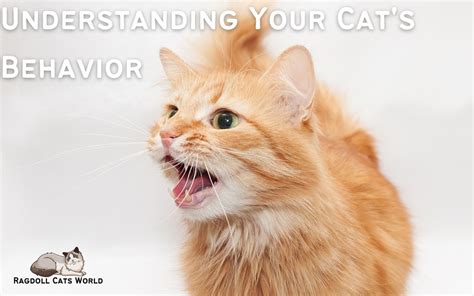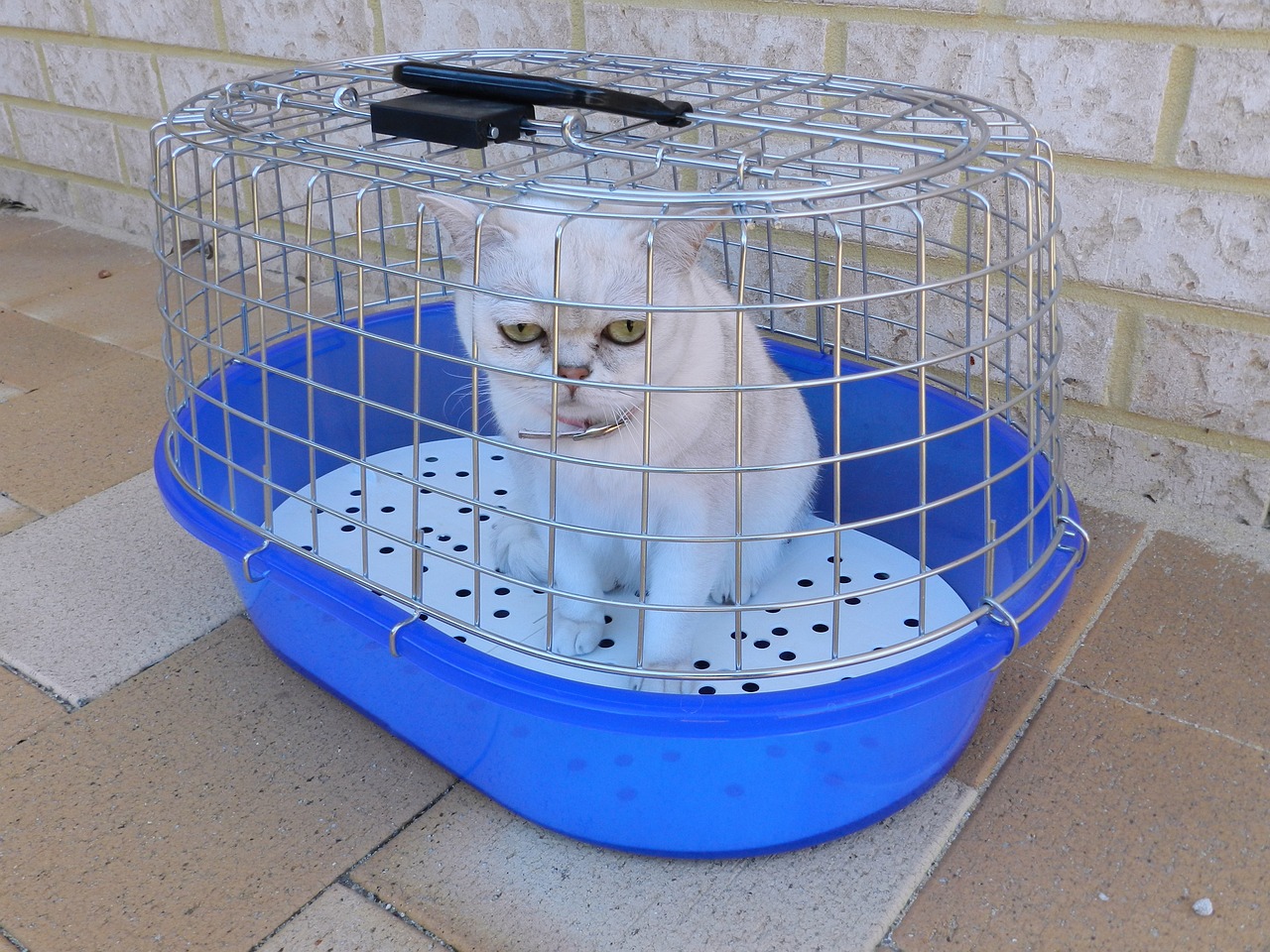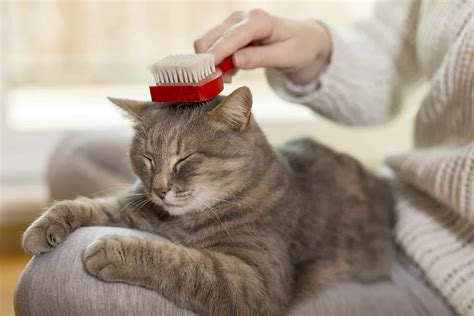Explore cat behavior essentials, communication styles, stress signs, and effective training techniques to enhance your feline friend’s well-being and understanding.Every cat owner knows that our feline friends can be both delightful and perplexing. Understanding your cat’s behavior is essential for nurturing a strong bond and ensuring their happiness and well-being. In this article, we will delve into the unique communication styles of cats, helping you interpret their subtle cues and actions. From common behaviors and their meanings to the significance of playtime, we will explore the intricate world of cat behavior. Additionally, we will highlight signs of stress and provide effective training techniques to improve your cat’s behavior. Whether you’re a seasoned cat parent or a newcomer to the joys of feline companionship, these insights will empower you to better understand your beloved cat, ensuring a fulfilling and harmonious relationship.
The Basics of Cat Behavior: Understanding Their Unique Communication Styles
Understanding cat behavior is essential for nurturing a healthy relationship with your feline friend. Cats communicate through various methods, including vocalizations, body language, and scent marking. Here are some key aspects of their communication styles:
- Vocalizations: Cats use a range of sounds, from meows and purrs to hisses and growls. Each sound has a specific meaning, expressing their needs or emotions. For example, a drawn-out meow often indicates a request for attention, while a soft purr signifies contentment.
- Body Language: Cats are masters of using body language to convey their feelings. A relaxed cat will have an upright tail, while a puffed-up tail can signal fear or aggression. Pay attention to their ears and whiskers; forward-facing ears and whiskers indicate curiosity or playfulness, while flattened ears suggest discomfort or annoyance.
- Scent Marking: Cats have scent glands in their cheeks, paws, and tail, which they use to mark their territory. By rubbing against furniture or people, they deposit their scent, creating a familiar environment that offers comfort.
- Facial Expressions: A cat’s face can express a wide range of emotions, from happiness to annoyance. Squinty eyes can indicate relaxation, while wide eyes may show fear or surprise. By observing their expressions, you can gain insight into their current mood.
- Grooming: Cats spend a significant amount of time grooming themselves. This behavior is essential for their hygiene but can also reflect comfort. Cats may groom each other as a bonding activity, showcasing companionship and trust.
By becoming more attuned to these communication styles, you can better understand your cat’s emotions and needs, leading to a more harmonious relationship. Recognizing the nuances in cat behavior can help you respond appropriately, ensuring your cat feels safe, happy, and understood.
Common Cat Behaviors and What They Mean for Your Feline Friend
Understanding cat behavior can be quite enlightening, as it reveals how cats express their needs, emotions, and personality. Here are some common behaviors you might observe in your feline friend and their meanings:
| Behavior | Meaning |
|---|---|
| Purring | Generally a sign of contentment; however, it can also indicate pain or discomfort in certain situations. |
| Scratching | A natural behavior for marking territory, keeping their claws healthy, and relieving stress. |
| Slow Blinking | A sign of trust and affection; often referred to as a cat kiss. |
| Bringing You ‘Gifts’ | This can mean they see you as part of their family and want to share their hunting success with you. |
| Vocalizing | Cats can use a variety of sounds to communicate; pay attention to the context to understand their needs. |
| Kneading | This behavior is often associated with kittenhood, indicating comfort and happiness. |
| Hiding | When a cat retreats, it may be due to stress, illness, or simply wanting some alone time. |
By observing these behaviors, you can develop a deeper understanding of your cat’s personality, needs, and emotional state. This knowledge will not only enhance your bond with your pet but also enable you to meet their needs more effectively, diminishing any potential behavioral problems in the future.
How Playtime Affects Your Cat’s Behavior and Well-Being
Engaging in playtime is crucial for understanding and enhancing your cat’s behavior. Cat behavior can often be influenced by their opportunities for physical and mental stimulation. Regular play not only provides exercise but also promotes essential aspects of their well-being.
1. Physical Exercise: Playtime allows your cat to engage in natural hunting behaviors. Chasing toys, pouncing, and jumping help to keep their muscles toned and their weight in check, reducing the likelihood of obesity-related issues.
2. Mental Stimulation: Cats are intelligent creatures that require mental engagement to stay sharp. Interactive toys or puzzle feeders can challenge them and help to prevent boredom, which can lead to destructive behaviors.
3. Bonding Time: Regular play also strengthens the bond between you and your cat. Interaction during play fosters trust and affection, making your feline friend feel more secure in their environment.
4. Behavioral Benefits: Engaging your cat in regular play can help reduce negative behaviors. Play can serve as a channel for excess energy, diminishing unwanted actions such as scratching furniture or aggressive tendencies.
5. Routine and Structure: Setting aside dedicated playtime helps to create a routine for your cat, contributing to their sense of stability. Cats thrive on predictability in their day-to-day activities, which can positively influence their overall cat behavior.
Understanding the impact of play on your cat’s behavior and well-being is essential for every owner. By incorporating regular, engaging play sessions into your cat’s daily routine, you can enhance their physical health, mental sharpness, and overall happiness.
Recognizing Signs of Stress in Cats: Input, Development, and Solutions
Understanding your cat’s behavior is crucial for maintaining their happiness and well-being. Just like humans, cats can experience stress, and recognizing the subtle signs is essential for every owner. Here are some common indicators of stress in cats, along with potential solutions.
Signs of Stress in Cats
- Changes in Grooming Habits: Cats are known for their grooming rituals. A stressed cat may either groom excessively or neglect grooming altogether.
- Altered Eating Patterns: Sudden weight loss or gain can be a significant sign of stress. A cat may eat less or binge-eat due to anxiety.
- Increased Aggression or Withdrawal: Changes in your cat’s demeanor, such as becoming more aggressive or hiding frequently, indicate emotional distress.
- Vocalization Changes: If your cat is meowing more than usual, it could be a cry for help due to stress.
- Litter Box Issues: Stress can lead to inappropriate urination or defecation, indicating that something is wrong.
Input and Development
Recognizing these signs early can help cats maintain a healthy emotional state. Input from owners plays a key role in a cat’s environment. Factors such as household changes, the introduction of new pets, or shifts in daily routine can all contribute to a cat’s stress levels.
Effective Solutions
Here are some strategies to alleviate stress in your feline friend:
- Safe Spaces: Create a calm environment by establishing quiet areas for your cat to retreat and feel secure.
- Routine: Keeping a consistent routine for feeding and playtime can provide a sense of stability for your cat.
- Enrichment Activities: Engaging your cat with toys, climbing structures, and interactive playtime can help reduce stress levels.
- Consult a Veterinarian: If your cat’s stress seems severe or prolonged, it is advisable to seek advice from a vet who may recommend behavioral therapy or medication.
By understanding your cat’s stress signs and taking proactive measures, you can greatly improve their quality of life and overall cat behavior. Recognizing and addressing stress promptly contributes to a happier, healthier feline companion.
Improving Your Cat’s Behavior: Effective Training Techniques for Owners
Understanding cat behavior is crucial for any cat owner who wishes to create a harmonious living environment. Effective training techniques can significantly enhance your feline friend’s behavior, making interactions more enjoyable for both parties. Here are some proven approaches:
1. Positive Reinforcement
One of the most effective methods for training your cat is positive reinforcement. This involves rewarding desirable behaviors with treats, praise, or playtime. For example, when your cat uses the scratching post instead of the furniture, immediately give them a treat. This helps them associate good behavior with positive outcomes.
2. Set Clear Rules
Cats thrive on routine and knowing what is expected of them. Establish clear rules for your household, such as areas that are off-limits or specific behaviors that are encouraged. Consistency is key; make sure all family members adhere to these rules to avoid confusing your cat.
3. Time-Outs
If your cat displays unwanted behavior, consider using a time-out method. This involves gently placing your cat in a quiet area away from distractions for a short period, allowing them to calm down. This technique is not meant to be punitive but rather to help them reset their behavior.
4. Engage in Playtime
Regular interactive play sessions can significantly influence cat behavior. Engaging your cat with toys, such as feather wands or laser pointers, helps reduce pent-up energy and prevents destructive behavior. Aim for at least 15-20 minutes of active play each day.
5. Use Clicker Training
Clicker training is another effective method that employs a distinct sound to mark good behavior. Each time your cat performs a desired action, click the device and offer a treat. This method can be particularly useful for teaching tricks or commands.
6. Be Patient and Observant
Training takes time, and patience is essential. Pay close attention to your cat’s reactions and adjust your techniques accordingly. Some cats may take longer to learn than others; therefore, persistence is vital.
7. Consult a Professional
If you’re struggling to manage your cat’s behavior, do not hesitate to seek help from a professional animal behaviorist. They can provide tailored advice and strategies suited to your specific situation.
Conclusion
Improving your cat’s behavior is a rewarding process that fosters a better understanding of their needs and preferences. By using positive reinforcement, clear rules, and engaging training methods, you can enhance your relationship with your feline companion and ensure a happier household for everyone.
Frequently Asked Questions
Why do cats purr?
Cats purr for various reasons; while it’s often associated with contentment, they may also purr when they are anxious, in pain, or seeking comfort.
What does it mean when my cat kneads with its paws?
Kneading is a behavior that originates from kittenhood, where cats knead their mother’s belly to stimulate milk flow. Adult cats may knead to show affection and comfort.
Why does my cat bring me ‘gifts’ like dead animals?
When a cat brings you a ‘gift,’ it’s an instinctual behavior reflecting their hunting nature. They may see you as part of their family and want to share their catch with you.
What does it signify when my cat stares at me?
A direct stare can indicate affection and trust. When cats gaze slowly at you, it’s often called a ‘cat kiss,’ signifying they feel comfortable and safe.
Why does my cat suddenly zoom around the house?
Cats may engage in bursts of energy, commonly referred to as ‘zoomies,’ as a way to burn off pent-up energy or during playful moments, especially in younger cats.
What does it mean when my cat’s tail is held high?
A tail held high signifies confidence and contentment in cats. It’s a positive sign that your cat feels secure in its environment.
Why does my cat scratch furniture or other surfaces?
Scratching is a natural behavior for cats, helping them to mark territory, keep their claws healthy, and stretch their bodies. Providing scratching posts can help redirect this behavior.










